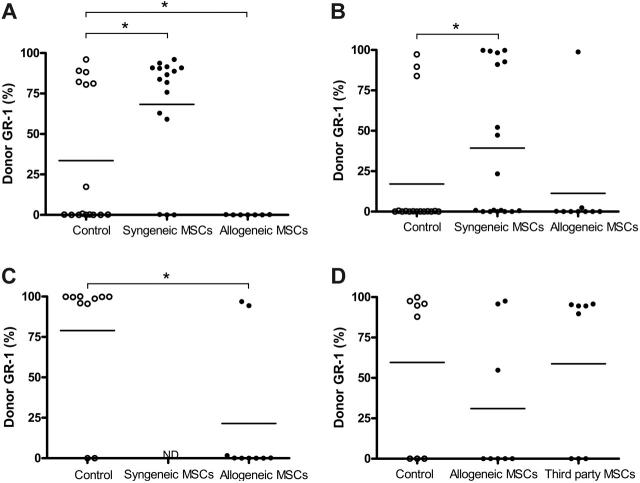Figure 4.
Allogeneic MSCs decrease engraftment of allogeneic BM. B6 recipients (irradiated with 5 Gy) underwent engraftment with T-cell–depleted BM from BALB/b mice (10 × 106) with or without B6 MSCs or BALB/b MSCs (A). Alternatively, T-cell–depleted BM from B6 mice (10 × 106) was transplanted in the presence or absence of BALB/c or B6 MSCs into BALB/c recipients (irradiated with 6 Gy) (B). MSCs (0.25 × 106) were infused 5 times at days 0, 3, 7, 10, and 14 after BM transplantation. Peripheral blood was harvested 4 months after BM transplantation and was analyzed by flow cytometry. Data presented are pooled from 2 experiments. (C) BALB/c recipients were irradiated with 6.5 Gy and underwent transplantation with T-cell–depleted BM from B6 mice with or without a single infusion of B6 MSCs (0.25 × 106). (D) BM from B6 mice was transplanted into BALB/c recipients (irradiated with 6 Gy) with or without 5 infusions of B6 or C3H MSCs (0.25 × 106). Four months after transplantation, peripheral blood was harvested and examined for chimerism by expression of MHC class I. Horizontal bar indicates the average percentage of positive staining of donor cells for each group. ND indicates not determined. *P < .05.

